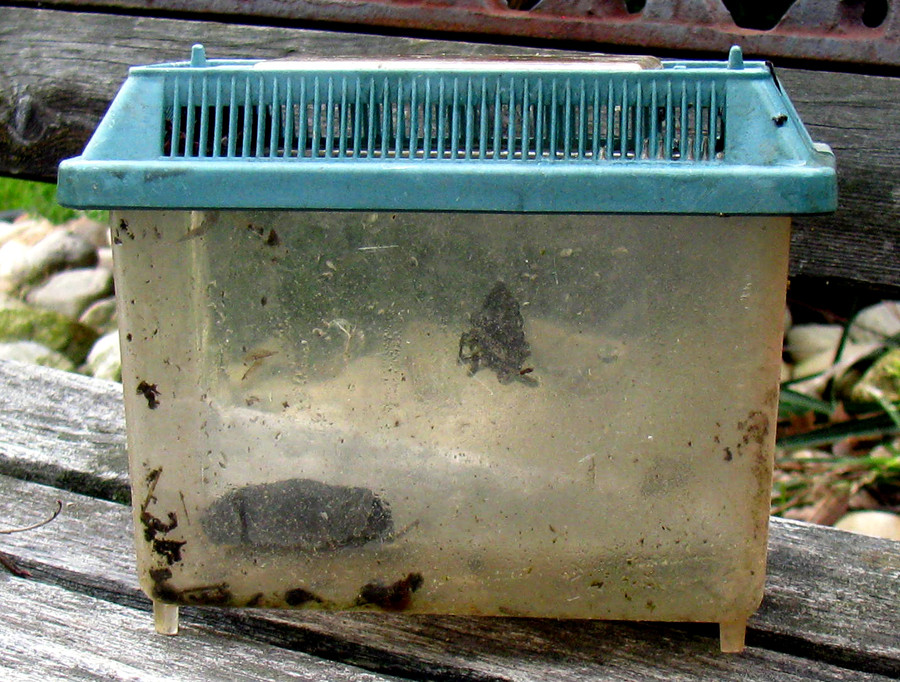The cardinal sound, often described as a clear, whistling song, is a familiar and welcome sound in many North American neighborhoods. At streetsounds.net, we understand the importance of capturing and appreciating these natural soundscapes, offering a diverse library of street sounds and beyond to enhance your creative projects and spark inspiration. Explore our curated collection of bird vocalizations and urban soundscapes to enrich your next project.
1. Decoding the Cardinal’s Song: An Auditory Exploration
The cardinal’s song is a distinctive and recognizable sound, but what exactly does it sound like?
The cardinal is known for its varied vocalizations, which can range from clear, whistling songs to sharp, metallic chips. Understanding the nuances of these sounds can help you appreciate the complexity of cardinal communication and incorporate these unique sound elements into your creative work.
1.1. The Whistling Song: A Melody of the Cardinal
The cardinal’s most recognizable sound is its clear, whistling song. This song is often described as a series of clear, descending whistles, repeated several times. Each phrase might sound like “cheer, cheer, cheer” or “birdie, birdie, birdie,” making it easy to identify in your backyard or local park. According to ornithologist Dr. Emily Carter from Cornell University’s Lab of Ornithology, these songs are primarily used by male cardinals to attract mates and establish territory.
- Melodic Structure: The song consists of repeated phrases, each lasting a few seconds.
- Variations: While the basic structure remains consistent, individual cardinals may introduce slight variations in pitch and rhythm, creating unique “dialects.”
1.2. The Chip Note: A Cardinal’s Alert
Besides their melodic songs, cardinals also produce a sharp, metallic “chip” or “tsip” sound. This note serves as an alarm call, warning of potential danger or intruders.
- Acoustic Properties: The chip note is short, staccato, and high-pitched, making it easily discernible even in noisy environments.
- Contextual Use: Cardinals use this call to signal various threats, from predators like hawks and cats to disturbances in their territory.
1.3. Other Cardinal Vocalizations: A Range of Sounds
In addition to the whistling song and chip note, cardinals produce a variety of other vocalizations, each with its own unique purpose and acoustic characteristics.
- Call Notes: These include soft chirps and trills used for communication between mated pairs or family members.
- Begging Calls: Young cardinals produce distinct begging calls to solicit food from their parents.
2. The Purpose of Cardinal Sounds: Communication and Territory
Why do cardinals make these sounds? Understanding the purpose behind their vocalizations can provide deeper insights into their behavior and ecology.
Cardinal sounds serve multiple functions, including attracting mates, defending territory, and communicating with family members. These vocalizations are essential for the survival and reproductive success of cardinals.
2.1. Attracting Mates: The Cardinal’s Serenade
Male cardinals use their songs to attract potential mates. The quality and complexity of their songs can indicate their fitness and desirability as partners.
- Song Quality: Females often prefer males with richer, more varied songs.
- Territorial Displays: Singing also serves as a display of territorial ownership, signaling to other males that the area is occupied.
2.2. Defending Territory: A Vocal Boundary
Cardinals are highly territorial birds, and they use their songs and calls to defend their territory from intruders.
- Aggressive Calls: When threatened, cardinals may use louder, more aggressive calls to ward off rivals.
- Territorial Disputes: Male cardinals often engage in vocal duels, using their songs to assert dominance.
2.3. Communication: The Cardinal’s Family Language
Cardinals use a variety of calls to communicate with their mates, offspring, and other family members.
- Contact Calls: These soft calls help maintain contact between mated pairs, especially when foraging in dense vegetation.
- Alarm Calls: As mentioned earlier, the chip note serves as an alarm call, warning of potential danger.
3. Identifying Cardinal Sounds: A Practical Guide
How can you identify cardinal sounds in the field? With a little practice, you can learn to distinguish their songs and calls from those of other birds.
Identifying cardinal sounds involves listening for their distinctive whistling song and sharp chip note. Familiarizing yourself with these sounds can enhance your birdwatching experiences and deepen your appreciation for nature.
3.1. Listening for the Whistling Song
The cardinal’s whistling song is one of the easiest bird songs to recognize. Listen for clear, descending whistles, repeated several times.
- Time of Day: Cardinals are most vocal in the early morning and late afternoon.
- Habitat: Look for cardinals in wooded areas, parks, and suburban gardens.
3.2. Recognizing the Chip Note
The chip note is a sharp, metallic sound that can be easily distinguished from other bird calls.
- Context: Listen for the chip note when there is a potential threat, such as a predator or disturbance.
- Location: Cardinals often use this call from concealed locations, such as dense shrubs or trees.
3.3. Comparing Cardinal Sounds to Other Birds
To avoid confusion, it’s helpful to compare cardinal sounds to those of other common birds in your area.
- Mockingbirds: Mockingbirds are known for mimicking the songs of other birds, including cardinals. However, mockingbird songs tend to be more varied and complex.
- Carolina Wrens: Carolina wrens have a loud, clear song that can sometimes be confused with that of a cardinal. However, wren songs are typically faster and more repetitive.
4. Where to Find Cardinal Sounds: Habitats and Locations
Where are you most likely to hear cardinal sounds? Understanding their preferred habitats can increase your chances of encountering these vocal birds.
Cardinals are found in a variety of habitats, including woodlands, gardens, and urban areas. Knowing where to look and listen can help you discover these beautiful birds and their distinctive sounds.
4.1. Woodlands and Forests: The Cardinal’s Natural Home
Cardinals are commonly found in woodlands and forests, especially those with dense undergrowth.
- Edge Habitats: Cardinals prefer edge habitats, where forests meet open fields or meadows.
- Nesting Sites: Look for cardinals near shrubs and trees that provide suitable nesting sites.
4.2. Gardens and Parks: Urban Cardinals
Cardinals have adapted well to urban environments, and they are frequently found in gardens and parks.
- Bird Feeders: Cardinals are attracted to bird feeders, especially those filled with sunflower seeds.
- Landscaping: Gardens with dense shrubs and trees provide cover and nesting opportunities.
4.3. Suburban Areas: Cardinals in Your Neighborhood
Cardinals are common in suburban areas, where they can find food, shelter, and nesting sites.
- Backyards: Listen for cardinal songs and calls in your own backyard.
- Neighborhood Parks: Visit local parks and green spaces to increase your chances of hearing cardinals.
5. Cardinal Sounds in Culture and Art: Inspiration and Symbolism
How have cardinal sounds been used in culture and art? These vocalizations have inspired artists, musicians, and writers for centuries.
Cardinal sounds hold cultural and symbolic significance, appearing in music, literature, and visual arts. Their vibrant songs and calls evoke feelings of joy, hope, and connection to nature.
5.1. Music: Cardinal Sounds as Inspiration
Cardinal sounds have been incorporated into various musical compositions, adding a touch of natural beauty and authenticity.
- Birdsong Recordings: Some musicians use actual recordings of cardinal songs in their music.
- Imitation: Composers may imitate cardinal sounds using instruments or vocal techniques.
5.2. Literature: The Cardinal as a Symbol
Cardinals often appear in literature as symbols of beauty, love, and hope.
- Poetry: Poets have long been inspired by the cardinal’s vibrant color and melodious song.
- Prose: Cardinals may be used as metaphors for resilience, passion, or spiritual awakening.
5.3. Visual Arts: Capturing the Cardinal’s Essence
Artists have depicted cardinals in various media, capturing their striking appearance and energetic spirit.
- Paintings: Cardinals are a popular subject for bird paintings and nature scenes.
- Sculptures: Sculptors may create lifelike representations of cardinals in various materials.
6. Cardinal Sounds on streetsounds.net: Enhance Your Projects
How can you use cardinal sounds from streetsounds.net in your creative projects?
streetsounds.net offers a diverse collection of high-quality cardinal sound recordings, perfect for enhancing your music, film, and multimedia projects. Our library provides the authentic sounds you need to create immersive and engaging experiences.
6.1. Exploring the Sound Library
streetsounds.net boasts an extensive sound library featuring a wide range of cardinal vocalizations.
- Variety: From melodic songs to sharp chip notes, our library includes a variety of cardinal sounds.
- Quality: All recordings are professionally captured and edited to ensure the highest quality.
6.2. Incorporating Sounds into Music Production
Add a touch of natural beauty to your music by incorporating cardinal sounds into your compositions.
- Ambient Tracks: Use cardinal sounds to create calming and atmospheric ambient tracks.
- Sound Effects: Incorporate chip notes as unique and attention-grabbing sound effects.
6.3. Enhancing Film and Video Projects
Create immersive and realistic soundscapes for your film and video projects using our cardinal sound recordings.
- Nature Scenes: Add cardinal sounds to nature scenes to enhance the sense of realism.
- Urban Settings: Even in urban settings, the presence of cardinal sounds can add a touch of tranquility.
 Baby Cardinal in Tree
Baby Cardinal in Tree
Alt text: A fledgling cardinal perched delicately on a tree branch, showcasing its early plumage in a suburban setting.
7. Understanding Cardinal Behavior: Insights into Their Vocalizations
What can cardinal behavior tell us about their vocalizations? Observing their behavior can provide valuable context for understanding their sounds.
Understanding cardinal behavior can provide valuable insights into the meaning and purpose of their vocalizations. By observing cardinals in their natural habitat, you can learn to interpret their songs and calls in context.
7.1. Courtship Rituals: Songs of Love
During courtship, male cardinals use their songs to attract potential mates. Observing these rituals can provide insights into the meaning of their songs.
- Song Displays: Males may engage in elaborate song displays, showcasing their vocal abilities.
- Pair Bonding: Mated pairs often sing duets, strengthening their bond and reinforcing their territory.
7.2. Territorial Defense: Vocal Battles
Cardinals are highly territorial birds, and they use their songs and calls to defend their territory from intruders.
- Aggressive Behavior: When threatened, cardinals may exhibit aggressive behavior, such as chasing or fighting with rivals.
- Vocal Warnings: Loud, repetitive songs serve as a warning to potential intruders.
7.3. Family Interactions: Communication within the Group
Cardinals use a variety of calls to communicate with their mates, offspring, and other family members.
- Parent-Offspring Communication: Parents use specific calls to direct their offspring, such as begging calls or alarm calls.
- Social Cohesion: Soft calls and trills help maintain contact between family members, promoting social cohesion.
8. Tips for Recording Cardinal Sounds: Capturing Nature’s Music
Interested in recording cardinal sounds yourself? Here are some tips for capturing high-quality recordings.
Recording cardinal sounds can be a rewarding experience, allowing you to capture the beauty of nature and preserve it for future enjoyment. Follow these tips to ensure high-quality recordings.
8.1. Choosing the Right Equipment
The quality of your recordings depends on the equipment you use. Invest in a good-quality microphone and recorder.
- Microphones: Shotgun microphones are ideal for capturing distant sounds, such as bird songs.
- Recorders: Digital recorders offer high-quality sound and convenient storage.
8.2. Finding the Right Location
Choose a location with minimal background noise and plenty of cardinal activity.
- Quiet Areas: Avoid areas with traffic, construction, or other loud noises.
- Cardinal Habitats: Focus on areas where cardinals are commonly found, such as woodlands, gardens, and parks.
8.3. Using Proper Recording Techniques
Use proper recording techniques to capture the best possible sound.
- Microphone Placement: Position your microphone carefully to capture the desired sounds while minimizing background noise.
- Gain Control: Adjust the gain settings on your recorder to avoid clipping or distortion.
9. The Future of Urban Soundscapes: The Role of streetsounds.net
How is streetsounds.net shaping the future of urban soundscapes?
streetsounds.net is committed to preserving and promoting the appreciation of urban soundscapes, including the sounds of nature within the city. Our mission is to provide high-quality sound recordings, educational resources, and a platform for connecting with other sound enthusiasts.
9.1. Preserving Urban Sounds
We are dedicated to preserving the unique sounds of urban environments for future generations.
- Archiving: Our sound library serves as an archive of urban soundscapes, capturing the sounds of today for tomorrow.
- Documentation: We document the stories and histories behind these sounds, providing valuable context and meaning.
9.2. Promoting Sound Awareness
We aim to raise awareness about the importance of sound in our lives and the impact of noise pollution.
- Education: We offer educational resources and workshops to help people understand the science of sound and the effects of noise.
- Advocacy: We advocate for policies and practices that promote quieter, healthier urban environments.
9.3. Connecting Sound Enthusiasts
We provide a platform for sound enthusiasts to connect, share their work, and collaborate on projects.
- Community Forums: Our online forums provide a space for people to discuss sound-related topics, share recordings, and ask questions.
- Events: We host events and workshops where people can learn about sound recording, sound design, and other related skills.
10. Why Cardinal Sounds Matter: Appreciating Nature’s Voice
Why should we care about cardinal sounds? Appreciating nature’s voice can enrich our lives and inspire us to protect the environment.
Cardinal sounds are an integral part of our natural heritage, and appreciating them can deepen our connection to the environment and inspire us to protect it.
10.1. Connecting with Nature
Listening to cardinal sounds can help us connect with nature, even in urban environments.
- Mindfulness: Paying attention to natural sounds can promote mindfulness and reduce stress.
- Appreciation: Appreciating the beauty of cardinal sounds can deepen our appreciation for the natural world.
10.2. Promoting Conservation
By appreciating cardinal sounds, we can become more motivated to protect their habitats and ensure their survival.
- Habitat Preservation: Protecting cardinal habitats is essential for ensuring their continued presence in our communities.
- Species Conservation: Supporting conservation efforts can help protect cardinals and other bird species from threats such as habitat loss and climate change.
10.3. Inspiring Creativity
Cardinal sounds can inspire creativity in music, art, and other forms of expression.
- Artistic Inspiration: The beauty and complexity of cardinal sounds can serve as a source of inspiration for artists and musicians.
- Environmental Art: Using cardinal sounds in art can raise awareness about environmental issues and promote conservation.
 Critter Carrier
Critter Carrier
Alt text: A well-used critter keeper, repurposed as an incubator for praying mantis egg cases, sits indoors, illustrating an unexpected wildlife encounter.
FAQ: Decoding Cardinal Sounds
What is the most common sound a cardinal makes?
The most common sound a cardinal makes is a clear, whistling song, often described as “cheer, cheer, cheer” or “birdie, birdie, birdie.” This song is primarily used by male cardinals to attract mates and establish territory.
How do you identify a cardinal’s call?
You can identify a cardinal’s call by listening for its distinctive whistling song or a sharp, metallic “chip” note. The whistling song is a series of clear, descending whistles, while the chip note serves as an alarm call.
What does a cardinal sound like when it’s alarmed?
When alarmed, a cardinal makes a sharp, metallic “chip” or “tsip” sound. This alarm call is used to warn of potential danger or intruders in their territory.
Do both male and female cardinals sing?
While male cardinals are known for their elaborate songs, female cardinals also sing, though their songs are typically shorter and less complex. Female songs are often used to communicate with their mates and offspring.
Why do cardinals sing so frequently?
Cardinals sing frequently to attract mates, defend their territory, and communicate with family members. Singing is an essential part of their social and reproductive behavior.
What time of day are cardinals most vocal?
Cardinals are most vocal in the early morning and late afternoon. This is when they are most active in establishing territory and attracting mates.
Can cardinals mimic other birds?
While cardinals are not known for mimicking other birds to the same extent as mockingbirds, they can sometimes incorporate elements of other birds’ songs into their own vocalizations.
How far can a cardinal’s song be heard?
A cardinal’s song can typically be heard from several hundred feet away, depending on the surrounding environment and the loudness of the song.
What does it mean when a cardinal is singing near my house?
If a cardinal is singing near your house, it likely means that it has established a territory in the area and is using its song to attract mates and ward off rivals.
Are there regional differences in cardinal songs?
Yes, there can be regional differences in cardinal songs. Similar to human dialects, cardinals in different geographic areas may have slight variations in their vocalizations.
By understanding and appreciating the diverse sounds of cardinals, you can enhance your connection to nature and find inspiration for your creative projects.
Call to Action
Ready to explore the fascinating world of street sounds and bird vocalizations? Visit streetsounds.net today to discover our extensive library of high-quality sound recordings. Whether you’re a musician, filmmaker, or sound enthusiast, you’ll find the perfect sounds to enhance your projects and spark your creativity. Join our community of sound lovers and share your own discoveries. Contact us at 726 Broadway, New York, NY 10003, United States, or call +1 (212) 998-8550. Start your auditory adventure now at streetsounds.net.

